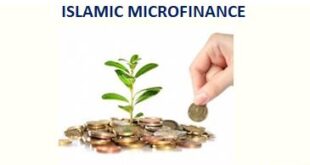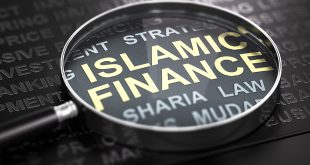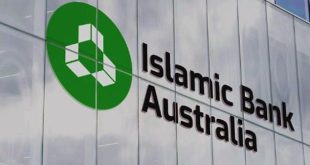The world’s monopoly currency is still on the slide as the US’s trade partners watch and attempt to navigate a strategy that will safeguard their own economies. The evidence suggests that more and more Central Banks are diversifying their reserves away from the greenback. Perhaps this turn of events will offer a chance for world trade to revert back to a gold backed system.
Short history Historically, gold and silver coins have been in use since pre-Christian times. During the reign of Caliph Umar (AD 632) the gold dinar was used throughout the Islamic world and continued circulation until the fall of the Ottoman Empire in 1924. In the twentieth century, there has been a gradual shift away from gold and gold backed currency which culminated in its final abandonment when the Bretton Woods system collapsed in the 1970s.
Up until 1971 the dollar was fully convertible to gold for any foreign government. Dr. Krassimir Petrov from the American University in Bulgaria says that by August 1971 the US government had defaulted on its payments when foreigners demanded payment for their dollars in gold. The popular ‘spin’ at the time claimed that the US government was severing its link with gold but the reality was closer to an act of bankruptcy.
Essentially, Dr. Petrov shows that the gigantic hordes of goods the US imported from the rest of the world with printed money was un-threatened by a world that was powerless to assert itself with any meaning. Moreover, before the world could recover from being ‘bamboozled’, a policy to rationalize the holding of a depreciating dollar was being secured with the use of ‘black gold’.
Washington entered into an ironclad agreement with Saudi Arabia to support the House of Saud in return for accepting only US dollars for its oil. Subsequently, other Gulf States and the rest of OPEC followed to secure the dollar with a monopoly position in any oil transaction. With the spread of these interlocking agreements and the world’s growing thirst for more and more oil, the global demand for dollars only rose.
This viewpoint is supported by recent history that proves how if any single nation dared to demand any other forms of payment for oil, it was dealt with either politically of militarily. In 2000, Iraq decided to shun away from the dollar under its UN oil for food programme and switch to the Euro as its oil exporting currency. A decisive military strike followed swiftly and with little time lost, the dollar was restored as Iraq’s oil export currency.
Today some 70 per cent of the world’s oil is denominated in dollars with even Russia using the greenback for oil transactions until last year. This is the status quo that the White house is fighting to maintain as it allows the leadership a free hand in expanding the public budget. It is the most significant factor as to why the US Federal Reserve was able to raise money supply last year by a massive 15 per cent. Conversely, a massive current account deficit of some $800 billion per annum has prevented hyperinflation as the Asian giants together with the oil exporters soak up the US debt.
Bush’s plans for 2007-2008 include an unprecedented $700 billion for foreign wars. The fact that he can raise such funds sans the conventional means of doing so via export growth, tax increases and / or economic expansion is a testament to the power of the petro-dollar. By forcing foreign central banks to hold increasing reserves of the dollar, he can shift the US debt on to trading partners in foreign lands. According to sources at The International Forecaster, US debt was up 10.1 per cent to 4.085 trillion last year and now accounts for over 58.8 per cent of total 2006 globally issued credit.
Bubble economics
Commentators have long argued that the recent US equity bubble that spurred the continuation of artificially low interest rates and a reckless expansion of the money supply has served to further deteriorate the income and wealth disparities in the US. The recent phenomenon has effectively shifted billions of dollars from the poor to the rich and if it continues unabated, may even threaten democracy in the long run.
Internationally, each and every time the dollar is traded, a check is drawn against an account that is overdrawn by $8.6 trillion, the estimated size of the US national debt. Mike Whiteny describes it as the biggest swindle in history. He argues that the only reason why the world continues to engage in dollar denominated trade is due to the glutinous US consumerism that is commonly referred to as the engine of global growth, sucking in exports from all corners of the globe.
The US love for consumer spending is unparalleled and the world marvels at its obsession with electronic gadgetry and craving for the latest fashions and other consumer goods according to Whiteny. The shopping mall is at the centre of the US consumer culture that drives the economy. Consumer spending is estimated to account for 70 per cent of GDP. However, recent data indicates that the US consumer’s pockets are thinning out under the strain of personal debt. The AP reported that US savings are at the lowest rate since the Great Depression. The Commerce Department has confirmed this, reporting that the nation’s personal savings rate for 2006 was a negative one per cent, the worst in 73 years.
Skyrocketing credit card debt is also another feature of the phenomenon that analysts say is an indication that home owners are no longer able to leverage easy money from their home equity. Moreover, rumblings of a real estate crash in parts of the continent have served to reduce the mortgage value of many properties. Last year an estimated $825 billion worth of loans were extracted from real estate equity. The signs are that the housing bubble is on a downward roll.
Real Estate, traditionally a driving force of the US economy is also weakening at multifarious rates across the states. Some sources estimate a decline of 3.6 per cent during January in sales of new homes. According to Standard & Poor’s Case-Shiller price index, the value of US homes dipped 0.7 per cent during the fourth quarter of 2006, the lowest rate since 1992.
Breeze of change
With the writing on the wall for the US economy, how can the world at large safeguard their own economic interest sans facing the ire of US military might. Outright rebellion with regard to dollar abandonment has resulted in the severest of consequences as the recent experience of Iraq bares witness.
However, if rebellion is not on, quite transition is nevertheless taking place as more and more central banks start to diversify into the euro or a mixed basket at the expense of the greenback. Analysts note that the central banks around the world are now watching for any further signs of cracks in US consumer confidence and other critical parameters. As soon as that happens, bank managers everywhere will swing into action, ditch their U.S. dollars
and head for the exits. As one commentator put it, “when the global engine sputters to a halt; it could be curtains for the greenback.’
During the recent Davos World Economic Forum meeting in Switzerland, Malaysian Prime Minister Ahmad Badawi said in an interview that his country had shifted $82 billion of currency reserves away from the dollar as a measure to protect Malaysian exporters. Malaysia unpegged from the dollar in July 2005 and switched to an undisclosed basket of currencies. The ringgit has gained 0.7 per cent on the dollar this year and is the world’s second best performing currency next to Iceland. The Malaysian Central Bank has on occasion declined to comment on the issue of diversification of currencies and foreign exchange policy. In the recent interview, the Prime Minister also admitted that they have cut their dollar holding and will watch the situation in order to take further measures as required.
He is not alone. Kuwait’s Finance Minister has also said this year that the Arab state, the world’s third largest oil producer, may abandon the dinar’s peg against the dollar in favour of a basket of currencies. This follows similar statements made by other Gulf states who have been increasingly disillusioned by US foreign policy that has spilled over to sour economic relations with the GCC. The Dubai Ports World deal failure is a case in point. Others also complain of the additional hassles involved in travel when dealing with US firms.
A Royal Bank of Scotland survey showing that 19 of 47 Central Banks surveyed cut their share of dollar reserves and 21 have raised their holdings of euros. A recent survey by the Central Banks Publications also showed that the euro made small gains as a reserve
Currency markets
The currency revolution will not be televised, it will be fought out in the markets. End of February witnessed a new two month low in the US dollar against the Euro as analysts speculated on the dawning of a state-wide housing slump following the release of fresh data. Further, the greenback weakened against 13 of the world’s 16 most active currencies amidst speculation of a lower growth forecast for the fourth quarter. The U.S. currency has dropped six percent against the Euro in the past year.
In London the dollar traded at $1.3184 per Euro and is expected to fall to $1.36 per Euro by mid-2007 due to key financial parameters. For instance, the Federal Reserve’s target overnight lending rate between banks of 5.25 per cent is 1.75 per cent higher than the European Central Bank’s rate whilst the yield premium that investors earn on ten year US Treasuries compared with similar maturity German bonds reached 0.613 per cent, chipping-away at the comparative lure of the US as a low risk high yield destination.
However, some traders believe that the dollar is not likely to free-fall due to vested interests that will intervene in order to protect options. It is expected that buying will be triggered at around $1.32 per Euro thereby serving to stem the decline. Options give holders the right to buy or sell a currency at a set price at a fixed future date.
Furthermore, the dollar is likely to strengthen by up to four per cent against the Japanese yen by mid-year due to the expectation that Japan’s Central Bank will not raise rates before the fourth quarter, according to sources at the world’s largest currency trader, Deutsche Bank AG.
Permissibility
Even so, for many commentators, the speculative nature of paper money, unconnected as it is from gold or anything of real value is tantamount to fraud and should not be considered as permissible or ‘halal’. Moreover, it gives Central Banks an unchecked capacity to print money which has all types of distorting impacts on an economy and wealth distribution impacts as described above.
So is there any chance of reverting back to the old system or any new alternatives? In April 2002, Malaysian Prime Minister Mahathir Mohamed proposed that the gold dinar be used for international trade to prevent a repeat of the currency crisis which devastated East Asia in 1997-98. Mr. Mohammed, who blames greedy currency traders for Asia’s downfall in the crisis, said paper currency had no intrinsic value, making the exchange rate "arbitrary and subject to manipulation as we saw during the Asian financial crisis."
Since then the Royal Mint of Malaysia has launched the country’s first gold diner which is now available to the public. Made of 22 carat gold (purity composition of 91.7 per cent), the quarter dinar was initially priced at RM51 and the 1 Dinar was priced at RM 181.
The demand for the coins was expected to arise from their value as a mode of savings. Much of the kudos for the initiative can be credited to Dr Ahamed Kameel Mydin Meera–professor at the International Islamic University in Kuala Lumpur. During a recent conference he emphasized that the initial step was to make the dinar a currency for international trade only. In the run up to the launch of the dinar, several conferences were held to clarify the proposed strategy and show how it could support bilateral and multilateral trade.
The mechanism would not seek to replace any national currencies. It was envisaged that the dinar will be held as a central bank reserve. Bilateral and multilateral trade need not be paid in actual dinar but the imports and exports of a pair of trading nations can be balanced and only the difference paid in dinar. To further minimize the need to physically move the dinar, he said trade surplus or deficit can be credited or debited against future imports or exports.
Unfortunately, since its launch, the skeptics of the system appear to be winning. They claim that gold is subject to speculative influence and therefore too unstable to be used as a medium of exchange. During the 70’s, gold became a major hedge against inflation. The run-up in gold prices from $35 to $850 per ounce came as a result of fears about the value of paper-money and the developing international crises. People who object to gold because it is speculative confuse and cause an effect. The real speculation is provoked by an irredeemable paper-money system and people who logically want to protect themselves from it.
Comparing prices in gold in the U.S. in 1833 with 1933, just prior to the abandoning of the domestic gold standard, the index of wholesale commodity prices increased only 0.9 percent in one hundred years! Since then the index increased 350 per cent by 1971 when President Nixon, declaring international bankruptcy, announced that no more gold would be given in exchange for dollars. In the last twenty years the index has gone up around 400 per cent.
The way forward
If the proposed Malaysian system was realized, Islamic Banks who are increasingly hip to the idea of utilizing new technologies can both facilitate the process and position themselves to reap the fruits from its success. The entire financial sectors of developing nations stand to benefit from a more stable environment for local currencies according to some analysts. The fiat system of paper money has resulted in 87 currency crises over the past 25 years. The introduction of a predictable and stable international standard of value will prevent future crisis and enable financial institutions to work in a more risk-free environment.
Additionally, the system will serve to promote more trade between Islamic States and the developing world. Currently, inter-OIC trade is very limited in coverage and Malaysia’s trade with other Islamic countries accounts for just over one per cent. The gold dinar will strengthen the international network of Islamic Banks as well as their links with other financial institutions.
Any early mover advantage to be gained will depend on the Islamic banking sector’s ability to design new financial products and services in response to existing customer’s needs. Wooing new customers will be the key. According to analysts, customers will want to pay their zakatA tax that is the duty and social obligation of every Muslim. This as the fourth Pillar of Islam., mahr, Hajj expenses and other payments with a gold dinar.
Gradually, the system could also change the substance and quantity of foreign currency held at banks. As exchange rates will be simplified, no longer dependent on the macro economic position of one nation, daily holding of exchange will be affected. International partnership projects based on Shirkat of Mudaraba can also benefit from the stabilizing effect of having an internationally accepted reference value. With lower risk, the number of long-term partnerships between international traders will tend to increase with time.
If this path was pursued it would face an unprecedented number of barriers that will resist change to the status quo. It might take much effort and time The holy prophet (PBUH), by his own example, encouraged gradual transition.
Main sources: Economic Teachings of the prophet Muhammad (PBUP) by Muhammad Akram Khan, Information Clearing House, Asia Times, Lanka Business Online, The Research Intelligence Unit, Associated Press, Bloomberg, BBC.
© Islamic Finance Today – Pioneer Publications (Pvt) Ltd
Post Disclaimer | Support Us
Support Us
The sailanmuslim.com web site entirely supported by individual donors and well wishers. If you regularly visit this site and wish to show your appreciation, or if you wish to see further development of sailanmuslim.com, please donate us
IMPORTANT : All content hosted on sailanmuslim.com is solely for non-commercial purposes and with the permission of original copyright holders. Any other use of the hosted content, such as for financial gain, requires express approval from the copyright owners.
 Sri lanka Muslims Web Portal Sri Lanka Muslims News Center
Sri lanka Muslims Web Portal Sri Lanka Muslims News Center



